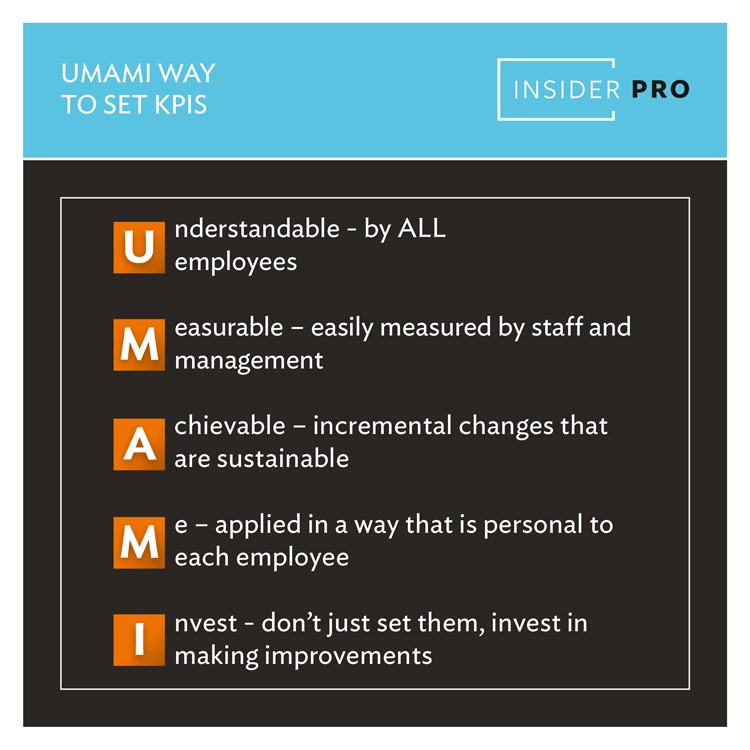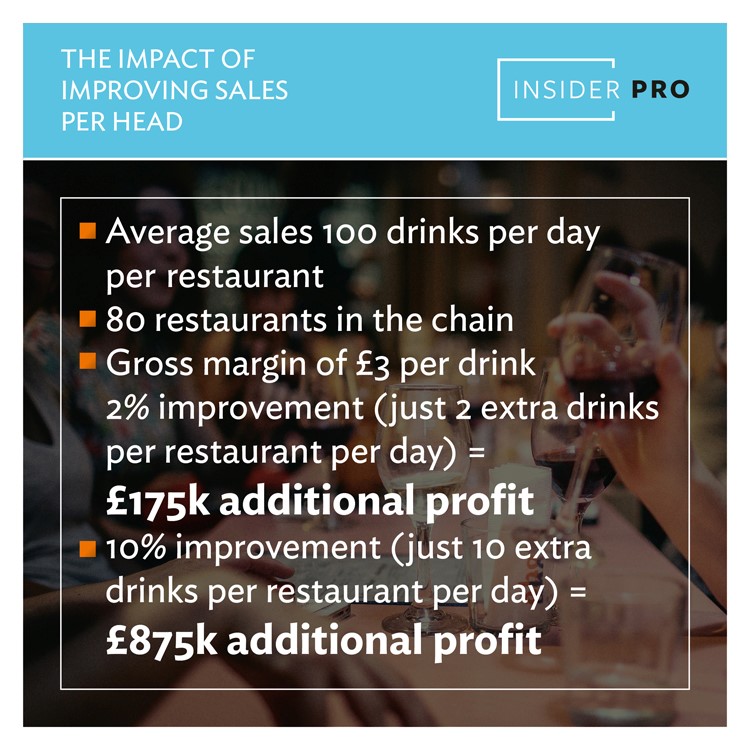Managers of casual dining chains are challenged by tight margins, high staff turnover, and rising costs. Most will report progress to investors via their P&L and a number of Key Performance Indicators.
Cash flow, RevPASH (revenue per available seat hour), table turnover rate and others are great for comparing progress:
- How did we do compared with last month?
- How does this compare with the same time last year?, and even..
- How are we doing against our competition?
But which restaurant KPIs actively drive business improvements?
We've observed that implementing changes throughout the business to improve revenue and/or reduce costs demands a more granular approach to KPIs. We call it the UMAMI approach – you heard it here first!

Let’s break that down in a bit more detail:
Understandable
The restaurant KPIs you choose should be understood by all those who are involved in delivering the result. If average drinks per head is 1.4 and you want it to grow to 1.5, express it in the number of extra drinks per service that each employee needs to sell. "Each server should try to sell 1 extra drink per service." or "Each server should aim to sell x bottles of wine per shift."
Measurable
Make sure your business systems can easily measure each KPI by person, by service, by day, by month etc
Achievable
As with any goal setting, being achievable is a key requisite. We advise that these should be incremental changes that are sustainable. eg selling 2 more drinks per day, every day.
Me
Cascade performance improvement goals down to individuals, so that they can see their personal impact on the business. Gamify it by introducing competitions to make it fun as well as meaningful.
Invest
Don’t just set KPIs, invest in making improvements to KPIs by setting goals, holding the right people accountable, regular monitoring and providing staff training.

Learn more about using restaurant KPIs to drive operational efficiency in The Secret Sauce of Restaurant Chain Profitability - a 60 page guide full of hints and tips and sound business knowledge aimed at owners and managers of UK casual dining restaurant chains.
Find out how to drive out cost and improve profits fast. Request your copy now:
More about restaurant KPIs:


